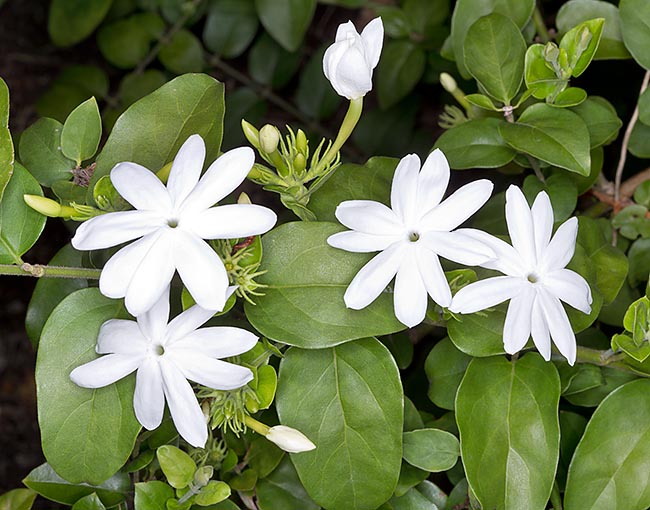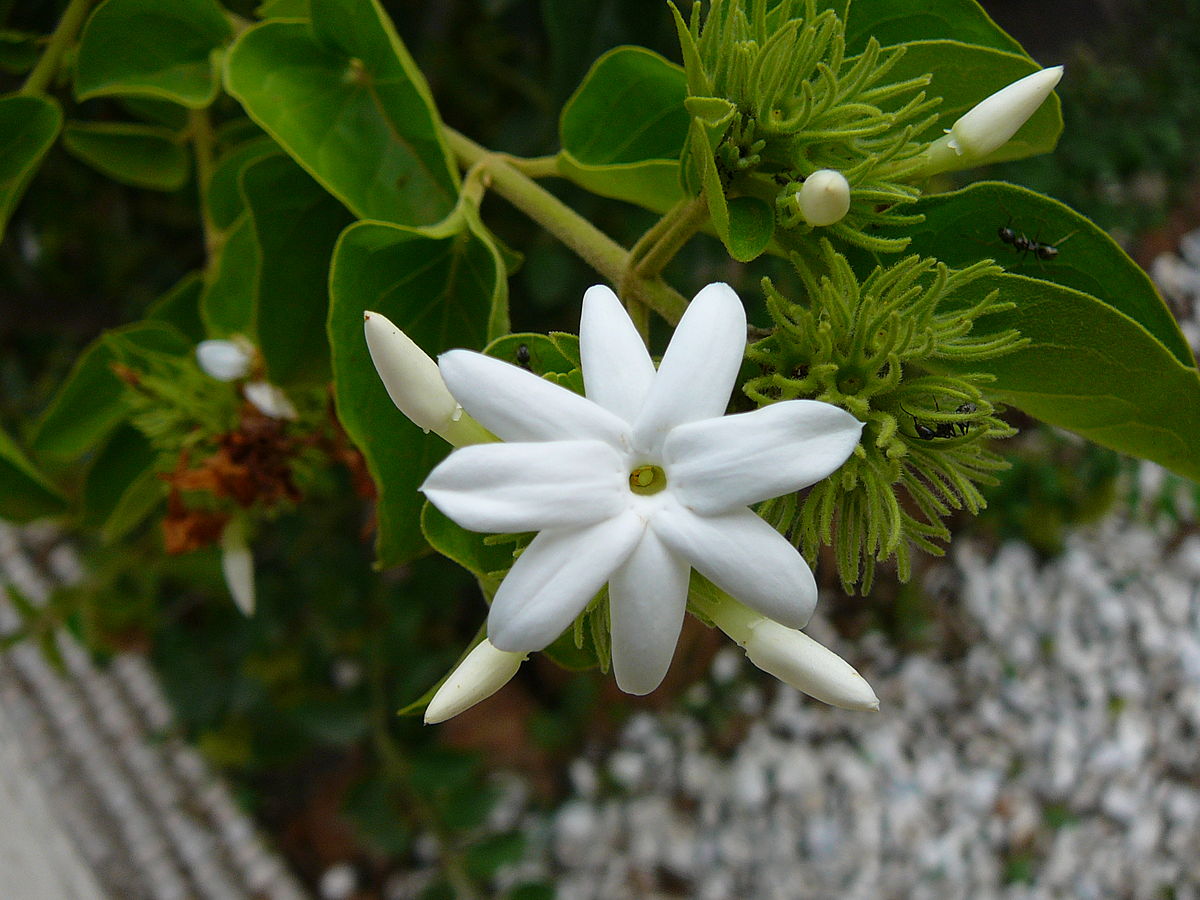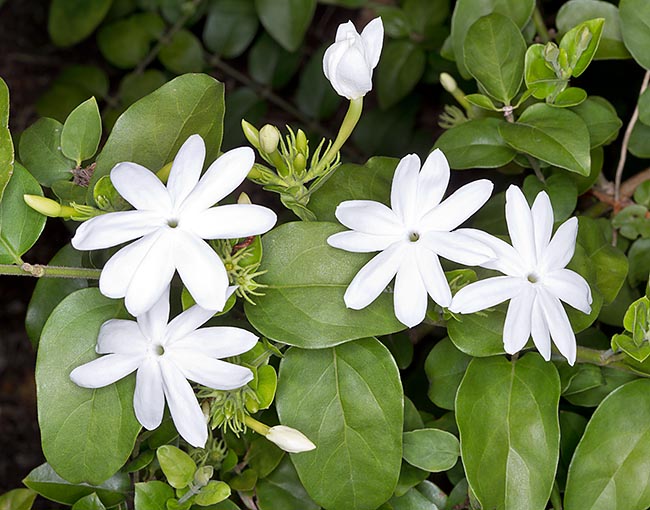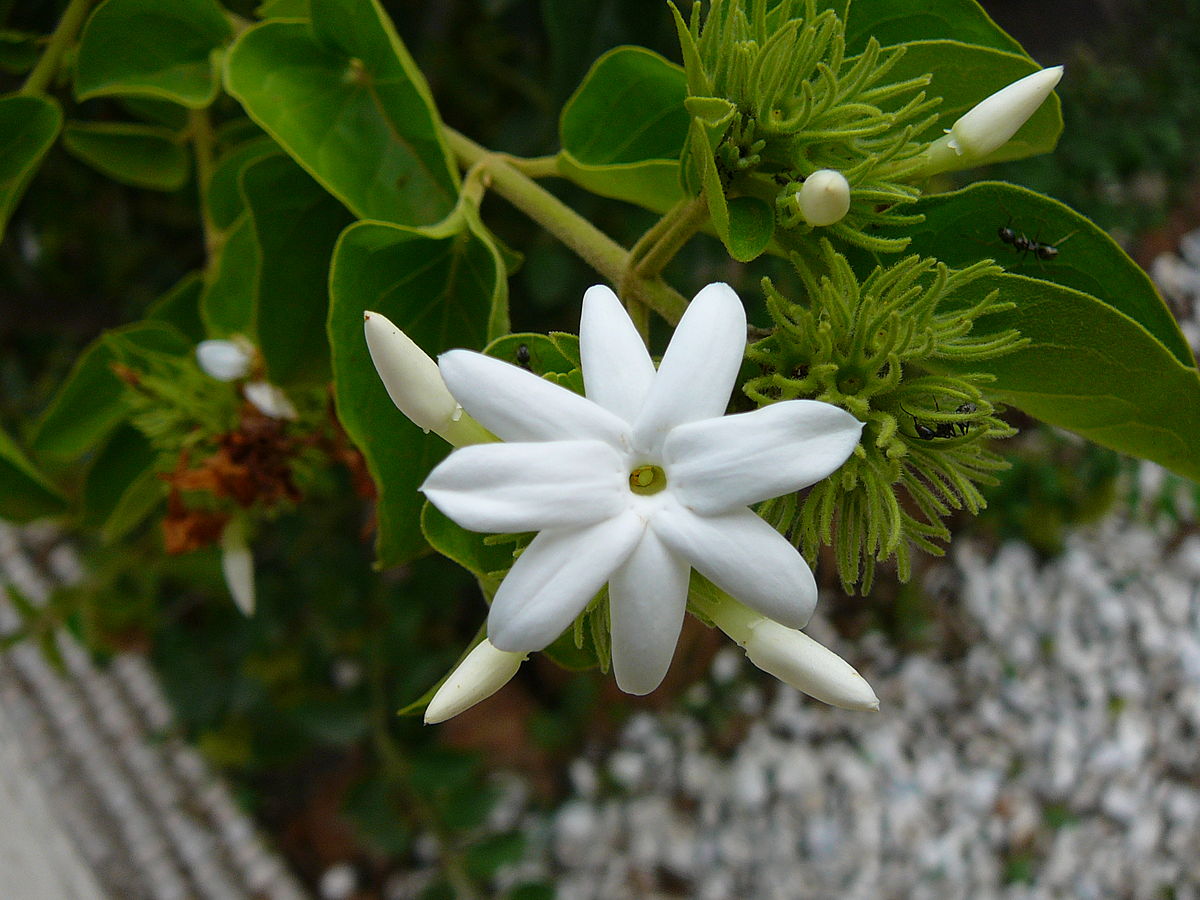Plantparadise
Jasminum multiflorum - Flowering Creeper
Jasminum multiflorum - Flowering Creeper
Couldn't load pickup availability
Description
Jasminum multiform is native to the Indian subcontinent and Southeast Asia, where it grows in the forests up to about 1300 m of altitude. It has been introduced outside its native range mainly due to cultivation as an ornamental shrub, being now present in many tropical and subtropical countries.
About Plant
It is an evergreen segmentize shrub with pubescent drooping branches, up to 3 m tall and more when in presence of a support. The leaves, on a 0,5-1 cm long pubescent petiole, are opposite, simple, entire, more or less pubescent below, ovate-cordate with pointed apex, 3-8 cm long and 2-5 cm broad.
Flowers are borne in congested clusters at branch-ends on small side shoots, many flowered. Flowers are white, generally scentless, tube 1.2-1.5 cm; petals 7-9, pointed, 1-1.5 cm. Flowers appear in bunches, almost throughout the year, and even the buds look beautiful.
JASMINUM MULTIFLORUM - STAR JASMINE CARE AND CULTURE
Cultural information should only be used as a guide, and should be to be adapted to suit you. Your physical location; where you grow your plants, how much time you have to devote to their care, and many other factors, will need to be taken into account. Only then can you decide on the cultural methods that best suit you and your plants.
Light:
Jasminum multiflorum should be grown near a west or south-facing window to allow for four or more hours of bright light each day, but protect it from direct sun in the summer months. Low light levels impede blooming.
Temperature:
Star jasmine require night temperatures of 17- 19°C and daytime of 22°C. Keep this plant cool in winter and place it outdoors in summer. Leaf loss is often caused by dry compost, over watering or cold temperatures. It can bear temperatures of a few degrees under the 0 °C for short time, possibly with loss of the aerial part, but with re-growth in the following spring if well mulched.
Substrate and growing media:
Jasminum multiflorum prefers well drained rich sandy loam to clay soil. They are usually grown in the open for commercial flower production. They are generally hardy plants and require well drained open area for best growth and flowering. With liberal application of manure and assured water supply, star jasmine can grown in sandy soils.
Cultivable also in pot to be sheltered in winter in the locations where the temperatures do not allow its survival in open air, in an as much as possible luminous position and where, in case, it can get some hours of sun per day, with lowest temperatures not under the 15 °C, and in such case it may even bloom
Watering:
Keep compost evenly moist at all times. Water the soil thoroughly and discard the drainage from the saucer. Jasmine cannot withstand water logging. Reduce watering in winter.
Preferably level of humidity of 50% or higher; however, they will tolerate low levels with no harm. They all thrive in humid conditions so frequent misting is advised. Dry air can cause leaves to curl.
Fertilizer:
These plants benefit from acid and iron supplements so a constant diet of 30-10-10 mixed at half strength in winter but the recommended rate during the growing season will help keep them happy.
Pruning:
In jasmine, flowering habit is terminal and axillary. So increasing the number of shoots would increase the yield, for which pruning is essential. Pruning influences growth, flower bud initiation, differentiation and ultimately the flower production. The best time for pruning is in the winter.
Materials
Materials
Shipping & Returns
Shipping & Returns
Dimensions
Dimensions
Care Instructions
Care Instructions




